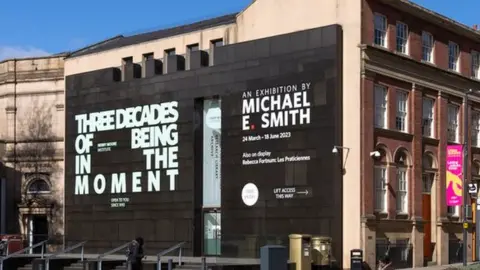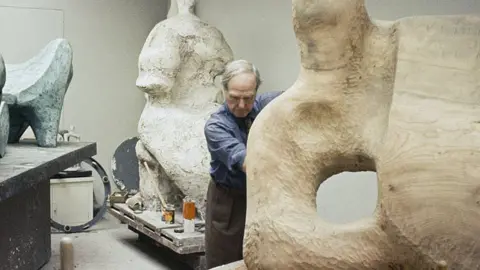Leeds: Henry Moore Institute marks 30th anniversary
 Henry Moore Institute
Henry Moore InstituteA centre in Leeds inspired by the sculptor Henry Moore is marking its 30th anniversary.
The Henry Moore Institute in Leeds is a centre for the study of sculpture, an art gallery and research library and opened on 21 April 1993.
Born in Castleford, Moore spoke of his desire to give people access to sculpture and other visual arts.
The centre offers free admission and has welcomed more than a million visitors and hosted 224 exhibitions.
"We are delighted to be taking some time to celebrate everything we have achieved as a specialist sculpture centre over the last thirty years," said the institute's head Laurence Sillars.
Since it opened it has acquired 30,000 books, publications and journals and displayed the work of more than 730 artists.
Mr Sillars said: "It's a real privilege to build on Henry Moore's legacy and continue to contribute to the city's cultural offer by giving the people of Leeds free access to world-class sculpture."
Events marking the anniversary include a special display about the creation of the institute and a creative competition which invites people to makeover the building.
 Getty Images
Getty ImagesThe institute is part of the Henry Moore Foundation, a charity founded by the sculptor and his family in 1977 to encourage public appreciation of the visual arts.
Moore, who died in 1986, explained in an interview in 1981 his desire to make sculpture accessible to people.
"I remember that as a young sculptor, there was nothing; there wasn't a single piece of sculpture in my home town."
A partnership between Leeds City Council and the foundation began with the creation of the Sculpture Study Centre in Leeds Art Gallery in 1982 and led to the development of the centre in 1993.
It is based in three former wool merchant's offices on Cookridge Street and the building, with its black granite facade, won a number of architectural awards.

Follow BBC Yorkshire on Facebook, Twitter and Instagram. Send your story ideas to [email protected].
